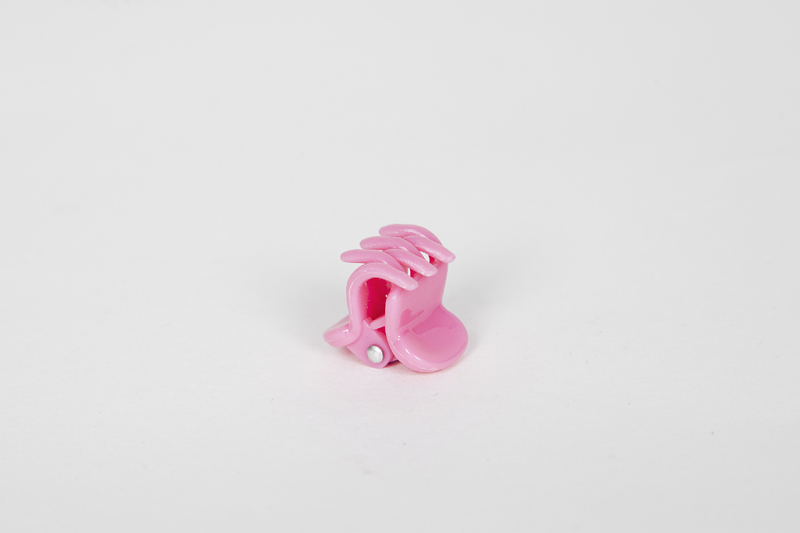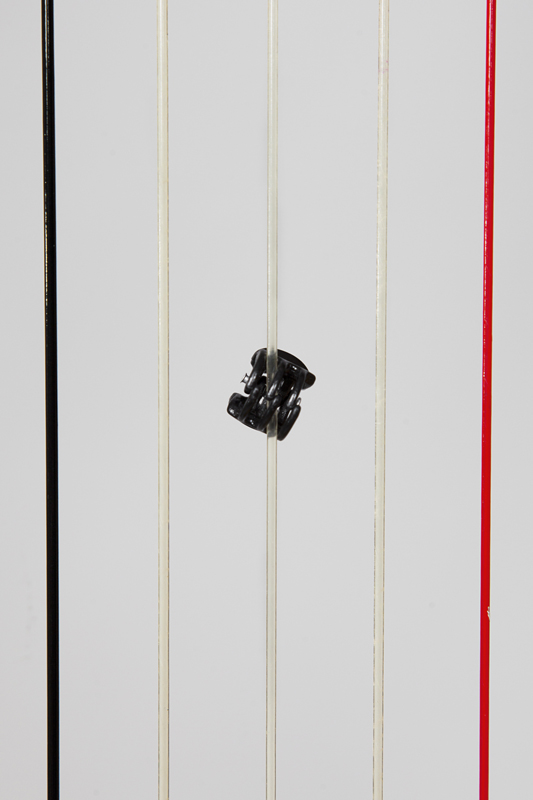Hair Clips
Using plastic hair clips is a very effective way to prepare the harp's strings. The German composer Sarah Nemtsov, for example, uses this preparation extensively in her music. Composer and improviser Rhodri Davies uses small metal aligator clips for a similar effect.

Hair clip.
Production
Small plastic hair clips are attached to the string. The hair clips have to be quite small for the upper register, and a bit larger for the middle and the low register. They should be sturdy and made of solid plastic.
The clip is placed in a way that it sits tightly on the string. The string goes between the "teeth" of the clip rather than just though the middle of the clip.

Hair clip on string.
The string can be played in a regular manner, but with moderate force. If the string is played too forcefully the clip might jump off the string.
The clips are easy to put on the string and can be easily and quickly taken away as well. Some time should be allowed to place them, but it can very well be done in the middle of a piece.
Sound
The sound of a string prepared with a hair clip is remarkably similar to the sound of a gong. Therefore this effect has also been called the gong-effect. When the string is played a wide spectrum of its overtones can be heard. This spectrum changes according to where the hair clip is placed on the string.
Placing the hair clip on the spot where the octave harmonic or the fifth harmonic is played gives a particularly effective sound.
Notation
If the strings are to be prepared in advance, a clear overview of the prepared strings should be given in the legend of the composition.
If the strings are to be prepared during the piece, use an x-shaped notehead and written instructions to indicate where the harpist should prepare or remove the preparations from the strings.
Range
The whole harp.